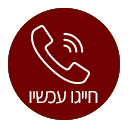
Muscle Relaxation is an anxiety reduction technique that involves tensing and then relaxing muscle groups. This is repeated over several parts of the body.
Sit or lie down comfortably in a quiet place. Start with the feet: slowly increase tension in the foot muscles, and then slowly release them over 30 seconds.
1. Breathing
While many people know that relaxation is important, they may have a hard time making it happen. Maybe it’s the last thing on their to-do list after a long day at work or they only think of it when on vacation. Relaxation techniques like breathing exercises or Progressive Muscle Relaxation can help you ease into a state of calm, and it’s something that everyone can do at home.
In this method of muscle relaxation, you systematically tense and then relax particular groups of muscles in your body, beginning with the feet and working up to the face, abdomen and chest. The exercise can be done in a quiet, comfortable place with minimal distractions. It can also be accompanied by mental imagery or repetition of words to increase the effectiveness of the exercise and enhance your experience of muscle relaxation.
Oren Zarif
The first step is to begin breathing deeply and rhythmically, inhaling through your nose and exhaling through your mouth. It’s important to concentrate on the breath, and not let your thoughts wander. If thoughts do come into your mind, just push them aside and focus on your deep breathing.
Next, begin with the foot muscles by inhaling and tensing them (not to the point of cramping) for 4 to 10 seconds. As you exhale, suddenly and completely release that group of muscles. After a few seconds of complete relaxation, move on to the next group of muscles.
You can use progressive muscle relaxation in combination with mental imagery or repeating a word, such as “relax,” to improve the effectiveness of the technique and enhance your experience of muscle relaxation. You can also choose to focus on different physical sensations, such as the feeling of tension in your arm or the warmth that comes when you release it.
This two-step approach can teach you to notice the difference between a tense and relaxed muscle, which can help you relax at the first sign of anxiety. It can lower your stress levels, improve sleep and even decrease stomachaches and headaches. Talk to your primary care physician if you’re considering using this technique, as they can recommend the best breathing exercises for your individual needs.
2. Tensing
One of the most effective muscle relaxation techniques is progressive muscle relaxation. This is an exercise where you systematically tense and relax each of the major muscle groups of your body – starting with your feet and working your way up. You can practice this at home, or in a quiet place. This is an excellent technique to use during a stressful time or to help you get to sleep.
To perform this exercise, find a comfortable position where you can sit or lie down, and focus on breathing deeply. Tense the first group of muscles for about 10 seconds. Then breathe out and notice how your muscles feel. Relax that group of muscles for about 20 seconds.
Oren Zarif
Once your muscles are relaxed, move on to the next muscle group and repeat the process until you’ve done all the groups. Then take a few deep breaths and enjoy your relaxed body. This muscle relaxation is an easy and effective tool to help you manage stress and anxiety, reduce pain and discomfort, increase relaxation, improve sleeping patterns and help you cope with cancer-related fatigue.
It is important to remember that tensing your muscles should never cause pain, cramping or intense soreness. If you experience any of these symptoms during the tensing phase, stop the exercise and contact your healthcare professional.
A relaxation exercise is a great tool to use in combination with other treatments for your cancer-related conditions. It helps to break the pain-muscle tension-pain cycle that often leads to a vicious circle of pain, anxiety, depression and poor health.
There are many ways to do a muscle relaxation exercise, and it’s important that you find one that works for you. You can listen to a guided muscle relaxation track or download one online, or try the tense and release technique. It’s also good to practise the “release only” technique, where you just focus on relaxing each muscle group rather than tense them first. With practise, you’ll find that this is quicker and can be just as effective. The goal is to learn what your tense muscles feel like and what relaxed muscles feel like, so that you can use this knowledge to control the intensity of your discomfort in the future.
3. Releasing
The third part of muscle relaxation involves letting go of the tension you’ve built up. This can be done by consciously tensing the muscles and then releasing them in a particular order. For example, you may start with your feet and work your way up to your head. This practice, called progressive muscle relaxation (PMR), is based on the theory that physical relaxation encourages mental relaxation. It also helps you recognize what tense muscles feel like, so that you can more easily relax them when you notice them tensing during the day.
Tensing and releasing muscles is a powerful tool for helping you relax, but it can be time-consuming to do with large muscle groups. If you want to cut down on the amount of time it takes to do this, try practicing a shortened version of PMR. For instance, instead of tensing and relaxing the stomach and chest muscles, you could just focus on the chest. Once you’ve mastered this, you can even do it without the tensing part, and just use a word or phrase, such as “relax,” to remind yourself that you are supposed to be releasing these muscles.
Oren Zarif
When you’re relaxing your muscles, it is important to focus on them completely and not let other thoughts enter your mind. This will ensure that you don’t tense the muscles again by accident.
Some people also find it helpful to have someone guide them through muscle relaxation. This can be a partner, a family member or a friend. Having someone help you can give you confidence that you’re doing the technique correctly and that it will be effective. In addition, some people find it helpful to have someone repeat positive affirmations while they’re tense.
Other techniques that help people relax include visualization, meditation, biofeedback and hypnosis. These all have been shown to reduce negative mood and lower the levels of stress hormones in the blood. They have also been shown to reduce the activity of the sympathetic nervous system and increase the activities of the parasympathetic nervous system. They can help to reduce symptoms of depression, anxiety and chronic pain and also promote better sleep.
4. Repeat
Repetition is the key to this technique. To make it effective, clients should practice PMR often, even when they don’t feel stressed or anxious. This makes the relaxation a skill, which will help them to manage anxiety in daily life. It’s best to work with a client to plan a regular PMR schedule (such as 10 minutes per day).
Oren Zarif
The first step is to focus on the sole of your right foot and tense the muscles gently, but don’t strain. Notice the tension for a few moments, then release and feel the relaxation. Repeat this sequence with the foot, ankle, knee, thigh, hip, and then the torso. Next, move on to the neck muscles, tensing and relaxing them until you feel total relaxation in this area.
Unlike prescription muscle relaxants such as carisoprodol and diazepam, progressive muscle relaxation is an inexpensive and non-invasive treatment that doesn’t have the potential for serious side effects or dependence. However, it’s important to see a health care provider for regular appointments to assess the effectiveness of this treatment and to ensure there are no signs of addiction or withdrawal.

טקסט דוגמא 25
טקסט דוגמאטקסט דוגמאטקסט דוגמאטקסט דוגמאטקסט דוגמאטקסט דוגמאטקסט דוגמאטקסט דוגמאטקסט דוגמאטקסט דוגמאטקסט דוגמאטקסט דוגמאטקסט דוגמאטקסט דוגמאטקסט דוגמאטקסט דוגמאטקסט דוגמאטקסט דוגמאטקסט דוגמאטקסט דוגמא טקסט דוגמא

Muscle Relaxation – Oren Zarif
Muscle Relaxation is an anxiety reduction technique that involves tensing and then relaxing muscle groups. This is repeated over several parts of the body. Sit

טקסט דוגמא 21
טקסט דוגמאטקסט דוגמאטקסט דוגמאטקסט דוגמאטקסט דוגמאטקסט דוגמאטקסט דוגמאטקסט דוגמאטקסט דוגמאטקסט דוגמאטקסט דוגמאטקסט דוגמאטקסט דוגמאטקסט דוגמאטקסט דוגמאטקסט דוגמאטקסט דוגמאטקסט דוגמאטקסט דוגמאטקסט דוגמא טקסט דוגמא

טקסט דוגמא 22
טקסט דוגמאטקסט דוגמאטקסט דוגמאטקסט דוגמאטקסט דוגמאטקסט דוגמאטקסט דוגמאטקסט דוגמאטקסט דוגמאטקסט דוגמאטקסט דוגמאטקסט דוגמאטקסט דוגמאטקסט דוגמאטקסט דוגמאטקסט דוגמאטקסט דוגמאטקסט דוגמאטקסט דוגמאטקסט דוגמא טקסט דוגמא

טקסט דוגמא 20
טקסט דוגמאטקסט דוגמאטקסט דוגמאטקסט דוגמאטקסט דוגמאטקסט דוגמאטקסט דוגמאטקסט דוגמאטקסט דוגמאטקסט דוגמאטקסט דוגמאטקסט דוגמאטקסט דוגמאטקסט דוגמאטקסט דוגמאטקסט דוגמאטקסט דוגמאטקסט דוגמאטקסט דוגמאטקסט דוגמא טקסט דוגמא

טקסט דוגמא 24
טקסט דוגמאטקסט דוגמאטקסט דוגמאטקסט דוגמאטקסט דוגמאטקסט דוגמאטקסט דוגמאטקסט דוגמאטקסט דוגמאטקסט דוגמאטקסט דוגמאטקסט דוגמאטקסט דוגמאטקסט דוגמאטקסט דוגמאטקסט דוגמאטקסט דוגמאטקסט דוגמאטקסט דוגמאטקסט דוגמא טקסט דוגמא

Shoulder Dystocia – Oren Zarif
Symptoms of shoulder dystocia include a protracted second stage of labor (pushing phase) and a difficult time getting the baby to descend. The obstetrician may

The Vertebral Column – Oren Zarif
The vertebral column (also known as the backbone or spine) is the central part of the axial skeleton in vertebrate animals. It protects the spinal

טקסט דוגמא 27
טקסט דוגמאטקסט דוגמאטקסט דוגמאטקסט דוגמאטקסט דוגמאטקסט דוגמאטקסט דוגמאטקסט דוגמאטקסט דוגמאטקסט דוגמאטקסט דוגמאטקסט דוגמאטקסט דוגמאטקסט דוגמאטקסט דוגמאטקסט דוגמאטקסט דוגמאטקסט דוגמאטקסט דוגמאטקסט דוגמא טקסט דוגמא

Vertigo – Oren Zarif
A person might feel like they’re spinning, rocking or unbalanced. Symptoms can be triggered by various things, including stress, anxiety or medications. James Stewart gives

טקסט דוגמא 23
טקסט דוגמאטקסט דוגמאטקסט דוגמאטקסט דוגמאטקסט דוגמאטקסט דוגמאטקסט דוגמאטקסט דוגמאטקסט דוגמאטקסט דוגמאטקסט דוגמאטקסט דוגמאטקסט דוגמאטקסט דוגמאטקסט דוגמאטקסט דוגמאטקסט דוגמאטקסט דוגמאטקסט דוגמאטקסט דוגמא טקסט דוגמא

Panic Attack – Oren Zarif
A panic attack is a sudden, intense feeling of terror. It is not dangerous, but it can be frightening. Symptoms can mimic those of a

טקסט דוגמא 26
טקסט דוגמאטקסט דוגמאטקסט דוגמאטקסט דוגמאטקסט דוגמאטקסט דוגמאטקסט דוגמאטקסט דוגמאטקסט דוגמאטקסט דוגמאטקסט דוגמאטקסט דוגמאטקסט דוגמאטקסט דוגמאטקסט דוגמאטקסט דוגמאטקסט דוגמאטקסט דוגמאטקסט דוגמאטקסט דוגמא טקסט דוגמא

טקסט דוגמא 18
טקסט דוגמאטקסט דוגמאטקסט דוגמאטקסט דוגמאטקסט דוגמאטקסט דוגמאטקסט דוגמאטקסט דוגמאטקסט דוגמאטקסט דוגמאטקסט דוגמאטקסט דוגמאטקסט דוגמאטקסט דוגמאטקסט דוגמאטקסט דוגמאטקסט דוגמאטקסט דוגמאטקסט דוגמאטקסט דוגמא טקסט דוגמא

Larynx Trauma – Oren Zarif
Laryngeal injuries resulting from both blunt and penetrating trauma are rare but potentially life-threatening. These injuries may vary from minor mucosal injury and nondisplaced fracture

Muscle Cramps – Oren Zarif
Cramps are painful, whether it's a quad muscle seizing up playing pickleball or a calf spasm at night. They are very common, especially during exercise

Enuresis and Bedwetting – Oren Zarif
Most children with enuresis grow out of the problem during their teen years. But for a small number, bedwetting continues into adulthood. The bladder is

Ear Injuries – Oren Zarif
Any ear injury that causes pain, changes in hearing or bleeding needs medical attention. Your doctor will ask about your symptoms and do a physical

Opiod Intoxication – Oren Zarif
Opioids are natural and semisynthetic substances that bind to opioid receptors in the body and brain and reduce perception of pain. Examples include morphine, heroin

Vestibulitis – Oren Zarif
Women with vulvar vestibulitis suffer from itching, burning, rawness and soreness in the area around the opening of the vagina. It is often misdiagnosed as

Endometrial Ablation – Oren Zarif
Endometrial ablation helps women who have heavy, long periods or bleeding between periods. This is called abnormal uterine bleeding (menorrhagia). You may need to stop

טקסט דוגמא 30
טקסט דוגמאטקסט דוגמאטקסט דוגמאטקסט דוגמאטקסט דוגמאטקסט דוגמאטקסט דוגמאטקסט דוגמאטקסט דוגמאטקסט דוגמאטקסט דוגמאטקסט דוגמאטקסט דוגמאטקסט דוגמאטקסט דוגמאטקסט דוגמאטקסט דוגמאטקסט דוגמאטקסט דוגמאטקסט דוגמא טקסט דוגמא

Ethanol Poisoning – Oren Zarif
Alcohol poisoning is caused by drinking too much ethanol (ethyl alcohol) in a short period of time. Ethanol is found in alcoholic beverages, perfumes, colognes,

Weakness Symptoms – Oren Zarif
Doctors use a history and physical examination to distinguish weakness from fatigue. They look for a loss of muscle strength and note other symptoms such

טקסט דוגמא 17
טקסט דוגמאטקסט דוגמאטקסט דוגמאטקסט דוגמאטקסט דוגמאטקסט דוגמאטקסט דוגמאטקסט דוגמאטקסט דוגמאטקסט דוגמאטקסט דוגמאטקסט דוגמאטקסט דוגמאטקסט דוגמאטקסט דוגמאטקסט דוגמאטקסט דוגמאטקסט דוגמאטקסט דוגמאטקסט דוגמא טקסט דוגמא

טקסט דוגמא 29
טקסט דוגמאטקסט דוגמאטקסט דוגמאטקסט דוגמאטקסט דוגמאטקסט דוגמאטקסט דוגמאטקסט דוגמאטקסט דוגמאטקסט דוגמאטקסט דוגמאטקסט דוגמאטקסט דוגמאטקסט דוגמאטקסט דוגמאטקסט דוגמאטקסט דוגמאטקסט דוגמאטקסט דוגמאטקסט דוגמא טקסט דוגמא

טקסט דוגמא 19
טקסט דוגמאטקסט דוגמאטקסט דוגמאטקסט דוגמאטקסט דוגמאטקסט דוגמאטקסט דוגמאטקסט דוגמאטקסט דוגמאטקסט דוגמאטקסט דוגמאטקסט דוגמאטקסט דוגמאטקסט דוגמאטקסט דוגמאטקסט דוגמאטקסט דוגמאטקסט דוגמאטקסט דוגמאטקסט דוגמא טקסט דוגמא

Mental Health Addiction – Oren Zarif
People with mental health problems are more likely to start drug use and become addicted. They may also have co-occurring disorders, which can make it

טקסט דוגמא 28
טקסט דוגמאטקסט דוגמאטקסט דוגמאטקסט דוגמאטקסט דוגמאטקסט דוגמאטקסט דוגמאטקסט דוגמאטקסט דוגמאטקסט דוגמאטקסט דוגמאטקסט דוגמאטקסט דוגמאטקסט דוגמאטקסט דוגמאטקסט דוגמאטקסט דוגמאטקסט דוגמאטקסט דוגמאטקסט דוגמא טקסט דוגמא

Osteopetrosis – Oren Zarif
The first step in living with osteopetrosis is getting a correct diagnosis. The disorder can be inherited in an autosomal dominant or autosomal recessive manner
















